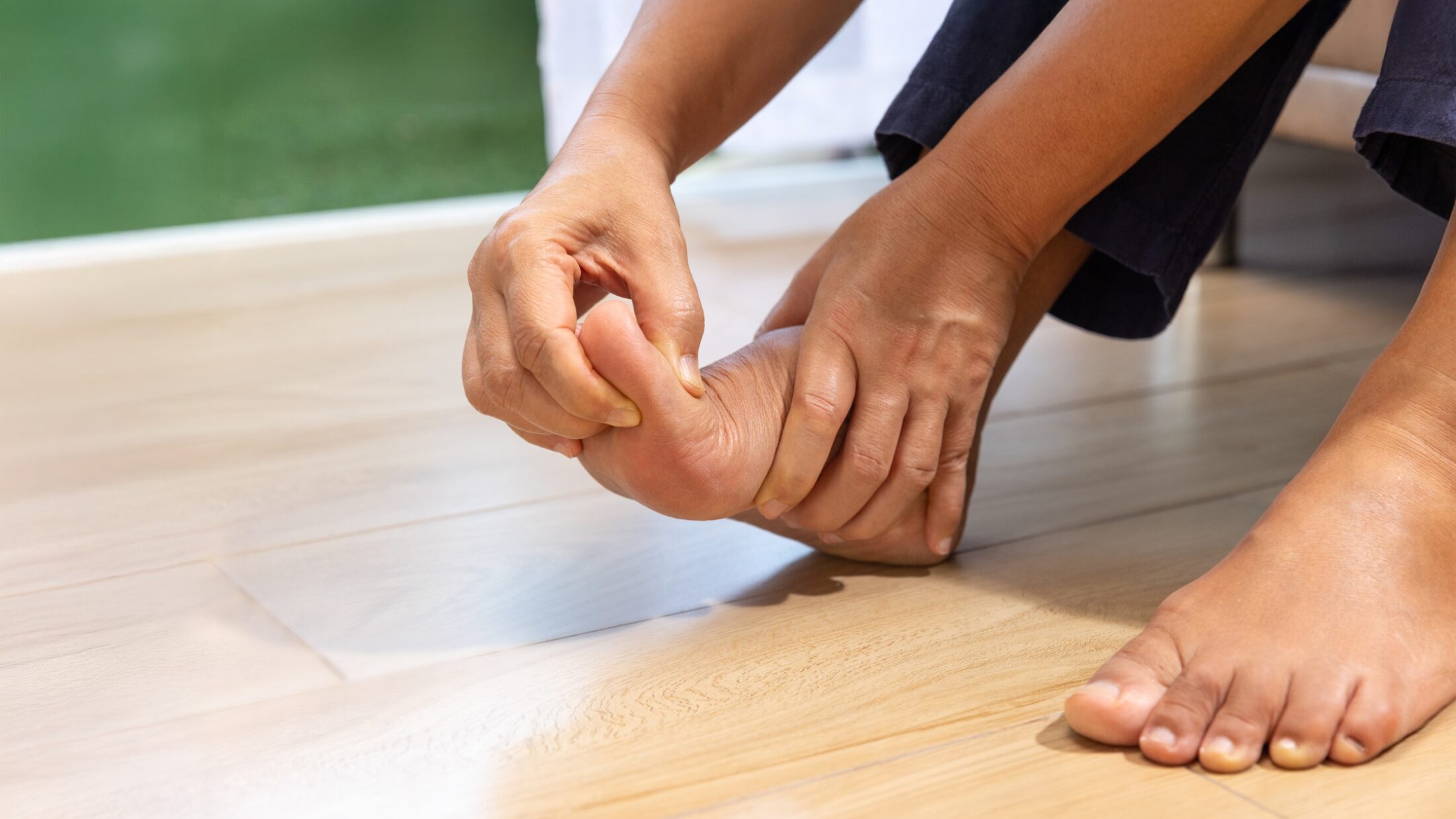Chronic back pain is a persistent condition affecting millions of people worldwide, disrupting their ability to work, enjoy daily activities, and maintain overall well-being. Characterized by discomfort lasting longer than 12 weeks, this condition can range from mild to debilitating, often impacting mobility, sleep, and mental health. Left untreated, chronic back pain may lead to worsening physical health.
There are effective back pain treatment options available to help manage symptoms and improve daily functioning. From supportive solutions like orthotics and back braces to therapeutic approaches such as physical therapy and exercise, these treatments can ease pain, restore mobility, and empower individuals to regain control over their lives.
What is Chronic Back Pain?
Chronic back pain is defined as discomfort in the back that persists for 12 weeks or longer, even after an initial injury or underlying cause has been treated. Unlike acute back pain, which resolves within a short time, chronic pain often requires ongoing management and can vary in intensity, ranging from dull aches to sharp, debilitating sensations.
Common Causes and Risk Factors
Chronic back pain can stem from a variety of conditions and lifestyle factors, including:
- Degenerative Disc Disease – Wear and tear on spinal discs over time.
- Herniated Discs – When the soft center of a spinal disc pushes through its tougher exterior.
- Spinal Stenosis – Narrowing of the spinal canal, putting pressure on nerves.
- Arthritis – Inflammation in the spine or joints contributing to stiffness and discomfort.
- Poor Posture or Ergonomics – Prolonged sitting or improper lifting techniques.
- Obesity – Extra weight placing added strain on the back.
- Stress and Sedentary Lifestyle – Muscle tension and lack of activity weakening the back.
Age, genetics, and occupation-related physical demands also increase the likelihood of developing chronic back pain.
Symptoms of Chronic Back Pain
Back pain can present itself in various ways, depending on the underlying cause and severity. Recognizing these symptoms is important when seeking timely treatment. Common symptoms include:
- A constant, dull ache or stiffness along the spine is a typical sign of back pain, often exacerbated by long periods of inactivity.
- Sudden, sharp pain that radiates down the legs, commonly known as sciatica, indicates nerve involvement and requires prompt attention.
- Difficulty in moving, standing, or walking due to pain can significantly impact daily activities and quality of life.
- Involuntary contractions of the back muscles can cause severe pain and hinder movement.
- Increased pain during or after physical activities can signal underlying issues that need medical evaluation.
What Happens If Chronic Back Pain Goes Untreated
Chronic back pain is not just a minor inconvenience; it can have far-reaching effects on physical, emotional, and overall health if left untreated.
Worsening Pain and Mobility Issues
Without proper treatment, chronic back pain often becomes more severe over time. This intensifying discomfort can make even basic movements like walking, bending, or standing difficult. Over time, reduced mobility leads to a loss of independence and a diminished ability to perform daily tasks.
Muscle Weakness and Imbalance
Prolonged inactivity caused by pain can weaken the muscles that support the spine. This imbalance increases the strain on surrounding muscles and ligaments, exacerbating back problems and creating a cycle of pain and instability.
Secondary Health Problems
Reduced physical activity due to chronic pain doesn’t just affect the back—it can lead to broader health concerns. Common complications include weight gain, increased risk of cardiovascular issues, and joint problems stemming from poor posture and inactivity.
Emotional and Mental Health Strain
Living with ongoing pain takes a toll on mental health. Many individuals experience frustration, anxiety, and even depression as they struggle to cope with constant discomfort. This emotional strain can further impact motivation and the ability to seek effective solutions.
Chronic Fatigue
Pain disrupts sleep by making it difficult to find a comfortable position or stay asleep through the night. Over time, this leads to chronic fatigue, leaving individuals feeling drained, unfocused, and less able to manage their daily responsibilities.
Long-Term Risks
Ignoring chronic back pain doesn’t just affect daily life—it increases the likelihood of needing more invasive treatments, such as surgery, in the future. Delaying care can also lead to permanent damage, making recovery more challenging and less effective.
Non-Surgical Treatment Options for Chronic Back Pain
Chronic back pain doesn’t always require surgery or strong medications. Many people find lasting relief through non-invasive therapies that target the root causes of pain—whether it’s poor posture, muscle imbalances, or wear-and-tear from daily life.
Physical therapy & guided exercise
Structured physical therapy focuses on strengthening the muscles that support your spine, improving flexibility, and correcting imbalances that contribute to chronic back pain. A qualified therapist will assess your movement patterns, posture, and range of motion to design a personalized program targeting the root causes of your discomfort. This often includes gentle stretching, core strengthening, and mobility exercises.
Over time, these guided exercises help retrain your body to move more efficiently, reducing strain on the lower back. Physical therapy is especially effective when combined with other treatments and offers long-term benefits by empowering patients to take an active role in their recovery. It’s not a quick fix—but with consistency, it can dramatically improve quality of life and help prevent future injuries.
Orthotics and back braces
When chronic back pain is linked to poor biomechanics or foot misalignment, custom orthotics can provide relief by stabilizing and properly aligning the body from the ground up. By correcting how your feet strike the ground and supporting proper posture, orthotics can reduce strain on the spine and relieve pressure points that may be contributing to pain.
Back braces offer another layer of support. Whether used during daily tasks or prescribed for specific injuries, a well-fitted brace can limit excessive movement, reduce muscle fatigue, and prevent further strain on the back. While not a permanent solution, braces are often part of a broader pain management plan and are particularly helpful during flare-ups or physical recovery periods
Posture correction tools
Many cases of chronic back pain are rooted in poor posture, especially for individuals who spend long hours sitting or working at a computer. Posture correction tools—such as lumbar cushions, ergonomic desk setups, and wearable alignment trainers—can make a noticeable difference by promoting proper spinal alignment throughout the day.
These supports work by gently guiding your body into healthier positions, helping to relieve pressure on the lower back and reduce muscle tension. When used consistently, they can retrain your posture habits and complement other treatments like physical therapy and exercise. Even small changes to your workspace or daily routines can go a long way toward reducing discomfort.
Massage therapy
Massage therapy goes beyond relaxation—it plays an active role in pain relief and muscle recovery. For individuals with chronic back pain, targeted therapeutic massage can reduce tension in tight muscle groups, increase circulation, and improve range of motion. It can also help ease stress and anxiety, which often intensify pain symptoms.
When incorporated into a broader treatment plan, massage therapy supports healing and complements interventions like physical therapy or shockwave therapy. Regular sessions may help break up muscle knots, release trigger points, and improve the body’s natural healing response. It’s a non-invasive way to address both physical and emotional components of chronic pain.
Radial shockwave therapy
Radial shockwave therapy is a non-invasive treatment that uses high-energy acoustic waves to stimulate the body’s natural healing process in soft tissues. This technique is particularly effective for treating chronic pain conditions, including lower back pain, especially when other conservative treatments haven’t produced lasting results.
By increasing bloodflow and encouraging tissue regeneration, shockwave therapy can reduce inflammation and break up calcified tissue or scar adhesions. Treatments are typically short, with minimal discomfort, and don’t require downtime—making it a practical option for many patients.
Compression therapy
Compression therapy involves using specially designed garments or pneumatic devices to apply gentle pressure to muscles and tissues. This improves circulation, reduces swelling, and helps flush out metabolic waste from tired or overused muscles. For those dealing with chronic back pain, compression can support muscle recovery and decrease daily discomfort.
It’s often used alongside other treatments and can be worn during activity or recovery. While compression doesn’t directly treat the spine, it helps manage surrounding muscle fatigue and improves overall comfort—especially for individuals with sedentary jobs or those on their feet for long hours. It’s a simple, non-disruptive addition to a back pain management routine.
Lifestyle adjustments
Even the most effective therapies can fall short without supportive lifestyle changes. Maintaining a healthy weight reduces strain on the lower back, while regular physical activity strengthens muscles that stabilize the spine. Daily movement—even walking—can help keep the body flexible and reduce stiffness over time.
Other impactful changes include stress management (since stress can cause muscle tension), improving sleep hygiene, and creating ergonomic workstations that reduce slouching or repetitive strain. Small, sustainable changes can make a big difference and reinforce the results of your treatment plan. With the right support, long-term back pain becomes more manageable.
How Non-Surgical Treatments Compare to Surgery
If you’re exploring options for managing chronic back pain, it’s helpful to understand how non-surgical treatments stack up against surgical intervention. While surgery may be necessary in severe cases, many people experience significant improvement with non-invasive therapies—without the downtime or risks associated with surgical procedures.
| Factor | Surgery | Non-Surgical Options |
|---|---|---|
| Invasiveness | High – involves incisions and anesthesia | Low – no invasive procedures required |
| Recovery Time | Weeks to months | Minimal, often resume activity same day |
| Cost | High – hospital and specialist fees | Moderate to low, depending on treatment |
| Risk | Higher – infection, complications, anesthesia risk | Lower – fewer side effects or complications |
| Long-Term Outcomes | Varies – not always guaranteed relief | Manageable with consistent care and support |
Non-surgical treatments can be especially effective for individuals looking to reduce pain, improve mobility, and support long-term spinal health—without the added stress of recovery from surgery.
Move Freely Again Without Surgery
Chronic back pain doesn’t have to dictate your quality of life. With non-surgical options like physical therapy, orthotics, and supportive back braces, it’s possible to reduce pain and restore mobility without invasive procedures. Complementary treatments such as massage, posture correction, and radial shockwave therapy offer added support, especially for pain that hasn’t responded to traditional methods.
Simple lifestyle adjustments—like improving your workspace ergonomics, staying active, and maintaining a healthy weight—can further support long-term pain relief and reduce flare-ups over time.
Since every case of back pain is different, it’s important to speak with professionals who can help guide you to the right mix of treatments. Custom back braces may be part of your solution, or your care plan might focus on posture and strengthening.
Book your appointment to get expert advice, explore non-invasive treatment options, and take the first step toward moving with confidence again.
Share This Story, Choose Your Platform!
Table of Contents
We specialize in orthotics, body braces, and compression wear tailored to your unique needs in Toronto. Reach out to us at info@caremed.care or call 416-782-5353 to book your fitting and consultation.
Experience the difference of customized solutions designed just for you.











